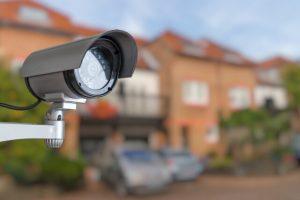New Criminal Law in California 2022On January 1st, 2022, state government authorities in California unveiled many new laws. These regulations dealt with drug offenses, jail time, civil sexual battery, and even rape. These bills have been passed primarily to strengthen present statutes and bring them up to speed with moral norms. According to the recently passed criminal laws, Nunchucks will remain legal despite the ban on police gangs. The new criminal laws would continue to recognize the effects of youth and earlier victimization as causes of anti-social behavior while limiting police actions and liberalizing sentencing rules. We need security cameras to fight crime.
Agencies are not permitted to approve police tactics that may result in positional asphyxia, along with a minimum age requirement of 21 for police officers. Absent robust and conclusive proof that jail is necessary. Felony probationers accused of violating are entitled to an O.R. release until a hearing. with New Crime Laws. The following is a list of new criminal laws that will become effective in California in 2022…
Defense for Certain Victims
Under the revised Penal Code (“P.C.”) 236.23, it is now a defense to all offenses other than violent ones if the defendant was forced to conduct the crime as a direct result of being a victim of people trafficking or sexual or intimate partner violence. (P.C. 236.24) Furthermore, according to new P.C. 236.15, convictions of such victims for non-violent offenses may be overturned upon petition.
New Penal Code Section 1016.7 mandates that when considering how to proceed with a criminal case, prosecutors take into account the accused’s young (under 26 years old), psychological, physical, and childhood trauma. As well as the fact that the person was a victim of intimate partner violence or human trafficking.
Use of Force & Peace Officers
Penal Code 13670 forbids police officers from being members of “law enforcement gangs.” defined as “groups of officers that identify themselves with any symbol and participate in a pattern of on-duty activity that breaches the law or core policing values.”
The authorization of any procedures or modes of transportation that provide a significant risk of “positional asphyxia” is now forbidden under Government Code 7286.5. Police can no longer place a person in a position that restricts their airway. They find it more challenging to breathe regularly. Newly employed police officers must be at least 21 years old, for which the government code is 1031.4.
Sentencing – Levels of Sentencing
Most felony charges carry three sentences: low, medium, and high. High-term sentences are permitted only when a jury finds beyond a reasonable doubt, or a party agrees to aggravate circumstances. Otherwise, the court “shall” impose only the mid-term sentence. After guilt is established, any aggravating circumstances must be proven in a separate proceeding. (P.C. 1170(b)(1), (2)].
However, when determining an appropriate sentence, a court may consider a certified record of prior convictions. Finally, a court should impose a light sentence if trauma, youth, or victimization played a role in the commission of the offense. [P.C. 1170 (b)( 3), (6)]
Under the former Health and Safety Code section 11370, most drug offenders who had previously committed drug offenses were ineligible for probation. Except in unusual circumstances, only those convicted of drug offenses involving minors with priors are now ineligible for probation.
Three-year drug priors and one-year prison priors (except for sexually violent priors) that were previously repealed are now retroactively repealed. People serving time for previous offenses are to be identified by the state prison and county jails, which must then alert the court so they can be resentenced.
Persons convicted of attempted murder and manslaughter under either a felony murder theory or the now-defunct natural and probable consequences doctrine may now apply to be under amended P.C. 1170.9. Just like those convicted of murder.
Proceedings while Absence
Previously, an incarcerated person who refused to appear in court for a preliminary hearing or trial was forcibly extracted. According to the new Penal Code, a court may determine by “clear and convincing evidence” that a defendant purposely fails to appear in court and permit their attorney to continue the case in their place sections 1043, 1043.5, and 977.
Gang Enhancement
Previously, the prosecution may present evidence about the defendant’s gang membership and the gang’s criminal activity during the concurrent trial of the gang enhancement and the primary offense. According to Penal Code section 186.22 (b) and (d), gang enhancements must now be tried separately and after the guilt of the underlying charge is determined, according to Penal Code section 1109.
Vandalism, identity theft, and looting are no longer considered gang “predicate” offenses, making gang enhancement (P.C. 186.22) more challenging to prove. Additionally, neither the charged offense nor the predicate gang offense may have been committed without the other. And the advantage of the predicate offenses must go beyond “reputational.” Finally, a gang must be classified as an “organized organization.”
Release of Probationers
Before 2022, individuals on felony probation were frequently remanded while the integrity of any violation charges was being investigated. Under Penal Code sections 1203.2 and 1203.25, probationers must now be released on their recognizance (O.R.) unless the court determines by “clear and persuasive” evidence that incarceration is necessary to ensure future court attendance or the protection of the public.
Safety & Security in Elections
Elections Code section 18541 now includes parking, access, and exit as part of the list of illegal actions within 100 feet of a voting station. Additionally, it’s against the law to solicit votes, talk to voters about marking their ballots or spread visible. Or audible electioneering materials close to someone waiting in line to cast a ballot or drop it off. The placement of phony vote boxes is also prohibited by new laws, as are activities near polling booths or other voting locations.
In addition, Elections Code section 18568 has been changed to make it illegal. To “direct or solicit a voter to place a ballot in such a container” and to “display a container to collect ballots from deceiving a voter into casting a ballot in an unofficial ballot box.”We need security cameras to fight crime.
Jury Selection Process
Using a peremptory objection to automatically rule out a juror on the grounds of their race, ethnicity, gender, gender identity, national origin, religion. The potential juror’s membership in any of those groups—is forbidden under Code of Civil Procedure section 231.7 in criminal cases.
Many impartial justifications for throwing out a jury are now believed to be illegal and open to legal dispute as of 2022. The new law permits challenges to using a challenge based on these standards. Need Security Cameras to fight crime.
However, challenges based on the followings are considered to be invalid:
1] Expressing mistrust for law enforcement or the criminal justice system or having a bad experience with it.
2] Suggesting that criminal laws have been applied unfairly or that law enforcement officials engage in racial profiling.
3] Being close friends with someone detained, taken into custody, or found guilty of a crime.
4] The area in which a potential juror lives.
5] Bearing a kid, not through marriage.
6] Getting government assistance.
7] Not speaking English as a first language.
8] Communication ability in a second language.
9] Attire one’s outward appearance.
10] Work performed by protected group members or that benefits them.
11] The potential jurors or their family’s unemployment.
12] The apparent bias of a potential juror.
Do you need security camera to fight crime? Call us for a FREE estimate to install security cameras @ 213-761-7900


